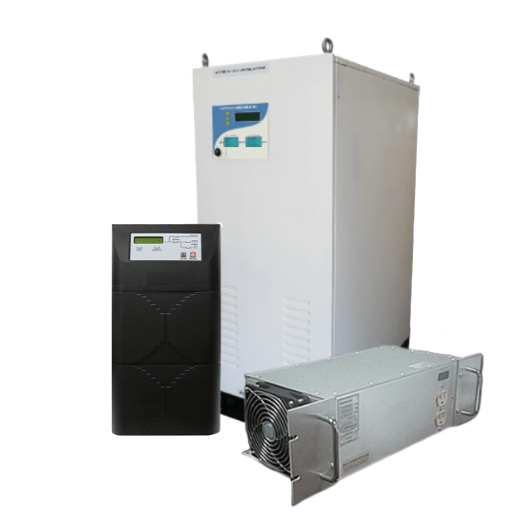Static frequency converters are critical components in modern electrical and industrial systems, yet many people remain unfamiliar with their operation and importance. These sophisticated devices enable the conversion of electrical power from one frequency to another, meeting the diverse requirements of equipment across various industries.
This comprehensive guide will explore the science behind static frequency converters, their construction, and practical applications. Whether you’re an electrical engineer, industry professional, or someone interested in power systems, this article will provide valuable insights into how these converters enhance efficiency, reliability, and performance in today’s energy sector.
What is a Static Frequency Converter?

A static frequency converter is an electronic device that converts electrical power from one frequency to another without using any moving mechanical parts. The conversion process involves three main stages:
- AC to DC conversion using a rectifier
- DC voltage stabilization through filtering
- DC to AC inversion at the desired output frequency
Key Definition
A static frequency converter transforms power supply from one frequency to another with high efficiency and provides smooth transitions between electrical systems, making it suitable for engineering, smart building, and renewable energy applications.
Static vs. Rotary Frequency Converters
Understanding the differences between static and rotary frequency converters is crucial for selecting the right solution for your application:
| Parameter | Static Frequency Converter | Rotary Frequency Converter |
|---|---|---|
| Operation | Uses electronic components | Uses motor-generator mechanism |
| Moving Parts | None | Includes moving parts |
| Efficiency | High for small loads | High for large loads |
| Maintenance | Minimal | Requires regular maintenance |
| Noise Level | Quiet operation | Audible noise |
| Size & Weight | Compact and lightweight | Larger and heavier |
| Cost | Lower for small-scale applications | Higher initial cost |
| Durability | Long-lasting due to no wear | Durable but requires upkeep |
How Does a Static Frequency Converter Work?

The operation of a static frequency converter involves several precisely coordinated stages. Let’s examine each step in detail:
Step 1: Rectification
Process: Converts incoming AC power to DC using a rectifier circuit
- Input Voltage Range: 110V to 690V AC
- Efficiency: Approximately 95%
- Purpose: Eliminates AC cycle variations for controlled conversion
Step 2: DC Filtering
Process: Smooths rectified DC power by removing ripples and fluctuations
- Ripple Reduction: Up to 99%
- DC Voltage Range: 300V to 1000V DC
- Purpose: Provides stable DC for subsequent conversion
Step 3: DC-to-AC Inversion
Process: Converts filtered DC back to AC using transistor-based inverters
- Frequency Range: 30Hz to several kHz (commonly 50Hz or 60Hz)
- Output Voltage Tolerance: ±1%
- Technology: IGBT (Insulated Gate Bipolar Transistor) switching
Step 4: Output Filtering
Process: Final filtering to minimize harmonic distortion and ensure clean power delivery
- Harmonic Distortion: Less than 3%
- Standards Compliance: IEEE 519, IEC standards
- Purpose: Protects sensitive electronic equipment
Step 5: Voltage and Frequency Regulation
Process: Continuous monitoring and adjustment of output parameters
- Response Time: Less than 10 milliseconds
- Load Regulation: Maintains stable output despite load variations
- Control: Microprocessor or DSP-based systems
Key Components of Static Frequency Converters
1. Rectifier Module
- Function: Converts AC input to DC
- Efficiency: 98% or higher
- THD (Total Harmonic Distortion): Below 5%
2. DC Link (Intermediate Circuit)
- Components: Capacitors and inductors
- Voltage Range: 400V to 800V typically
- Purpose: Energy storage and voltage stabilization
3. IGBT Inverter Stage
- Technology: Insulated Gate Bipolar Transistors
- Switching Frequency: Over 20 kHz
- Output Frequency Range: 0.1 Hz to 400+ Hz
4. Control Module
- Technology: Microprocessors or Digital Signal Processors
- Features: AI-based demand prediction and energy management
- Response Time: Under 10 milliseconds for load changes
5. Cooling System
- Type: Air or liquid cooling
- Capacity: High-density systems handle 500kW+ loads
- Purpose: Maintains optimal operating temperature
6. Output Filter
- Function: Harmonic suppression and EMI reduction
- Capability: Attenuates harmonics up to 50th harmonic
- Output: Clean sine wave
Applications of Static Frequency Converters

🛩️ Aviation
Powers avionics, lighting, and ground support systems with precise 400Hz frequency requirements.
🚆 Railways
Converts grid power for rail electrification systems, often converting 50Hz to 16.7Hz for European trains.
🏭 Industrial
Powers machinery requiring specific frequency control for optimal speed and torque management.
🏥 Medical
Ensures reliable power supply for critical medical equipment requiring precise frequency control.
⚓ Maritime
Supplies shore power to ships at ports, allowing vessels to shut down diesel engines while docked.
🔬 Testing Labs
Simulates various power conditions for equipment testing and certification processes.
| Application Area | Description |
|---|---|
| Renewable Energy | Integrates wind and solar power into existing grids |
| Military | Powers radar and communication systems |
| Data Centers | Stabilizes power for critical IT infrastructure |
| Manufacturing | Controls motor speed and torque for efficiency |
Industrial Applications in Detail
Motor Speed Control
Static frequency converters enable precise motor speed control in industrial applications, optimizing performance while minimizing energy consumption and equipment wear.
Production Line Integration
Essential for manufacturing processes requiring precise speed control, including:
- Textile production
- Paper manufacturing
- Food processing
- Chemical processing
Testing Laboratory Applications
Industrial testing labs use static frequency converters to simulate various power supply conditions, crucial for:
- Equipment certification
- Performance testing
- Quality assurance
- Compliance verification
Role in Renewable Energy Systems
Wind Energy Integration
Wind turbines generate electricity at variable frequencies based on wind speed. Static frequency converters stabilize this output to match grid requirements. Recent industry reports indicate that the implementation of SFC in large-scale wind farms has led to efficiency gains of 5-7%, achieved by reducing energy losses.
Solar Energy Applications
Photovoltaic installations experience fluctuations in power generation due to changes in solar radiation. SFCs help regulate the flow of energy into the grid and storage systems. According to the International Renewable Energy Agency (IRENA), solar farms with SFC installation ensure synchronized generators and provide smooth power flow to the grid.
Environmental and Economic Benefits
- Reduced fossil fuel dependence
- Enhanced grid stability
- Improved renewable energy utilization
- Long-term cost savings
Transportation Sector Applications
Railway Electrification
SFCs convert public grid power (typically 50Hz) to railway-specific frequencies (such as 16.7Hz used in European rail systems), enabling efficient train operations across different regions.
Airport Ground Support
Airports use SFCs to provide 400Hz electrical power to aircraft at gates, eliminating the need for fuel-consuming ground power units and reducing emissions.
Marine Applications
Ports utilize SFCs to supply shore power at appropriate frequencies, allowing docked vessels to shut down diesel engines while maintaining onboard systems.
Urban Transit Systems
Trams, subways, and electric buses rely on SFCs for reliable power distribution and load management in urban transportation networks.
Benefits of Static Frequency Converters

⚡ Energy Efficiency
Reduces energy consumption and operational costs significantly
🎯 Precise Control
Provides accurate voltage and frequency control for sensitive equipment
🔧 Low Maintenance
No moving parts means minimal upkeep requirements
📦 Compact Design
Smaller and lighter than traditional rotary converters
🔇 Noise Reduction
Operates quietly due to lack of moving mechanical parts
⏱️ Extended Equipment Life
Reduces wear and tear on connected machinery
Efficiency Advantages Over Rotary Converters
Superior Energy Performance
Static frequency converters achieve efficiency levels up to 99%, compared to rotary converters’ 85-90% efficiency range, due to the absence of mechanical energy losses.
Minimal Maintenance Requirements
With no moving parts, SFCs require virtually no maintenance, unlike rotary converters that need regular servicing of bearings, shafts, and other mechanical components.
Enhanced Reliability and Longevity
SFCs can operate reliably for over 20 years with proper installation, while rotary converter performance typically declines over time due to mechanical wear.
Superior Power Quality
Static converters provide excellent voltage and frequency regulation with low harmonic content, protecting sensitive equipment from power quality issues.
Compact Form Factor
Without large rotating machinery, SFCs are significantly more compact and lightweight, saving installation space and reducing structural requirements.
Reliability and Maintenance
Built-in Diagnostics
Modern SFCs feature sophisticated diagnostic systems that continuously monitor performance and predict potential issues before they cause failures, minimizing unexpected downtime.
High Mean Time Between Failures (MTBF)
The robust design and component redundancy in SFCs result in exceptionally high MTBF ratings, making them ideal for critical applications that cannot tolerate interruptions.
Remote Monitoring Capabilities
Contemporary SFCs offer remote monitoring features, allowing technicians to assess performance and diagnose issues from any location, enabling rapid response to potential problems.
Cost-Effective Operation
Long-term operational savings include:
- Reduced energy consumption
- Lower maintenance costs
- Minimal downtime
- Extended equipment lifespan
- Improved load management
References
-
Virginia Tech – Analysis of Electric Disturbances from the Static Frequency Converter of a Pumped Storage Station
Link to source -
Texas A&M University – Engineering Fundamentals Of Multi-MW Variable Frequency Drives
Link to source -
CiteSeerX – FM Converter
Link to source
Frequently Asked Questions
Static frequency converters operate by taking incoming AC power and converting it to a desired frequency and voltage level using power electronics, without any moving parts, ensuring high reliability and efficiency.
They convert electrical power frequency from one value to another (such as 50 Hz to 60 Hz), providing stable and reliable power to equipment operating on different frequency standards, particularly in aviation and industrial settings.
In aviation, SFCs convert grid power to the required 400Hz frequency and voltage for aircraft systems, ensuring reliable power while the aircraft is on the ground.
Static frequency converters work with various power sources, including single-phase and three-phase AC power supplies, converting them to meet specific frequency and voltage standards.
By utilizing solid-state technology, SFCs eliminate moving parts, reducing wear and tear while enhancing reliability. Their precise frequency control contributes to improved efficiency by effectively managing power output to match load demands.
While SFCs primarily focus on AC frequency conversion, they can be part of systems that convert DC to AC, which is particularly relevant in renewable energy applications that require power conversion.
Static frequency converters utilize solid-state technology, eliminating the need for moving parts, and offer advantages in efficiency and maintenance. Rotary frequency converters use mechanical components and may be more suitable for specific high-power applications.
Frequency converters ensure that electrical equipment operates within the required power standards by converting input frequencies to the desired output frequencies, thereby maintaining compliance with international power standards across various sectors.
Conclusion
Static frequency converters represent a crucial technology in modern electrical systems, offering unparalleled efficiency, reliability, and versatility. From industrial applications to renewable energy integration, transportation systems to aviation, these devices continue to play an increasingly important role in our electrical infrastructure.
Understanding how static frequency converters work—from the initial rectification stage through final output filtering—provides valuable insight into their capabilities and applications. As technology continues to advance and the demand for efficient, reliable power conversion grows, static frequency converters will undoubtedly remain at the forefront of electrical engineering solutions.
Whether you’re planning an industrial installation, integrating renewable energy sources, or designing transportation systems, static frequency converters offer the precision, efficiency, and reliability needed for success in today’s demanding applications.
